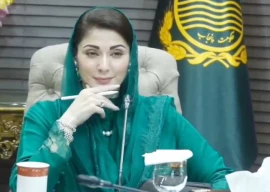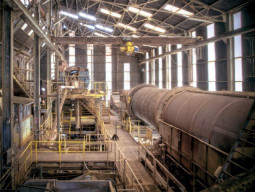
The evidence is unmistakable: climate change is already occurring. South Asia with its delicately balanced ecology, its heavy reliance on monsoons, its critical dependence on agriculture and persistent mass poverty, is one of the most vulnerable regions in the world to climate change. Increased variability in the magnitude and timing of rain fall during the monsoons could increase the instability of agriculture production and add to the burden of the poor. The long and densely populated coastline with low lying islands, such as the Maldives, make the region vulnerable to sea level rise associated with global warming. The Himalayas containing the region’s glaciers, the source of its rivers, and the key to the region’s climate and economy, are highly sensitive to temperature increases. Srivastava provides evidence to show that some Himalayan glaciers are melting faster than the global average. This could have a critical impact on the stability of water supplies and, thereby, on the economy and society of the region.
The Intergovernmental Panel of Climate Change (IPCC) had predicted that global warming would increase the frequency and intensity of extreme climatic events. The study by Cruz et. al. (2007), provides data to show that this is indeed happening in South Asia. For example, the frequency of intense rainfall events has increased, causing floods and landslides in Pakistan, Bangladesh, Nepal, northeast India and Sri Lanka, during the last decade. Consecutive droughts in 1999 and 2000, in Pakistan and northwest India adversely affected agriculture growth and the drought of 2002 in Orissa (India) caused crop failures which affected 11 million people.
According to the IPCC, the increase in temperatures in South Asia in the decades ahead are likely to be above the global average. The study by Georgi and Bi (2005) suggests that higher temperatures will lead to increased year to year variability of monsoon rains. This combined with the adverse effect of temperature on heat sensitive varieties of food grains could have a critical impact on agriculture production and accentuate the problem of food security in South Asia.
Climate change is also likely to have a significant impact on health. The increased frequency and intensity of heat waves could increase the incidence of heat stroke, cardiovascular, cerebrovascular and respiratory diseases according to a recent study by Hales, Edward and Kovats. Furthermore, the increased frequency of floods could lead to increases in the incidence of diarrhea, dysentery, cholera, typhoid and rodent borne diseases.
As local communities across South Asia face a threat to their life and livelihoods due to climate change, large scale dislocation and migration of populations can be expected. Increased flooding and prolonged droughts could displace communities inhabiting the riverine plains; sea level rise would change the salinity profile of coastal areas, degrade large areas of fertile land and consequently displace the local communities which are dependent for their livelihoods on coastal plains. SC Rajan has estimated that climate change could force 125 million people to leave their habitat and migrate to other places in South Asia.
Managing population dislocation, natural disasters, instability of water supply and food shortages resulting from climate change, will require a high degree of interstate cooperation in South Asia. The integrated ecology of South Asia, its mountains, rivers, forests and top soils constitute the basis of sustaining its economy and social life. The nation states of this region share this integrated life support system. They also share the risks posed to it by climate change. Therefore, we the peoples of South Asia and our respective states, must cooperate and bring to bear our shared humanity and innovativeness to face the challenge of climate change. Cooperation, not conflict, is the key to building a better future for the people of South Asia.
Published in The Express Tribune, August 22nd, 2011.
COMMENTS (9)
Comments are moderated and generally will be posted if they are on-topic and not abusive.
For more information, please see our Comments FAQ
1731916090-0/sabrina-(3)1731916090-0-405x300.webp)


1732020599-0/BeFunky-collage-(73)1732020599-0-165x106.webp)
1731926127-0/zayn-(1)1731926127-0-165x106.webp)


1724319076-0/Untitled-design-(5)1724319076-0-270x192.webp)









Each community in local level would have responsibility to enhance the environmental balancing capacity of their own area as has national government. It should be done with proper scientific understanding. Conservation, protection, proper care, economic and wise use of resources, and incorporating environmental perspective to every work would be recommend. Think globally, act locally. Regional thinking is also important but not perfect. There may be some exaggeration, but genuine knocking for climate scientist and world leaders might be worthy.
@Meme Mine - those are such poor arguments they don't even stand up for themselves. Science is an incredibly reliable mechanism for drawing valid conclusions from research & analysis. The science of climate change is very heavily researched, and the conclusions are not vague, or in doubt, or questionable. Even a lay person can make the link between 7,000,000,000 humans producing CO2 at an increasing rate, and a corresponding set of global climate-related changes.
Examples why you're wrong: 1) science does not "assume" anything - it does the opposite to that. 2) climate science does not study "effects" in isolation - it investigates relationships. 3) science does not "commit fraud" or "exaggeration". 4) The statement "Scientists gave us pesticides don’t forget, hardly saints." is a an ad hominem attack - ie a logical fallacy. True, it happened, but pesticides did what they were supposed to do, even if in a later and larger context, they had other negative impacts beyond the narrower intention of using pesticides. Science created our understanding in both cases. 5) "Trust nobody". We can trust "trustworthy" people and systems, more than anyone or anything, that means scientists and science. (I trust my comments will get posted, thanks to science). 6) Science doesn't tell us to be "happy" or "disappointed" about the climate - it tells us about causes and effects.
Very nice and timely Op Ed, Professor Sahib. Thanks a lot for bringing the facts our for debate if not action. The last part of your writing is the most imp for our own future survival. We cannot afford to be isolated to fight the effects of global warming. Cooperation and mutual understanding and friendship is the key to our future. Instead of claiming more area, let us first protect and preserve what we have.
BruteForce: Do you deny evolution too as well as ancient climate? Glaciers have never happened before? Aug.22/2011: The Australian government, amid convoys of climate change tax protests is poised to be defeated and thus spelling the end of climate change mitigation. Now every government on the planet will officially all walk away from the CO2 mistake and politicians will not be accepting any blame as they point fingers at exaggerating scientists and leaders in environmentalism and media. Criminal charges are coming to bring an end to this mass insanity of climate blame that condemned billions of children to a CO2 death and subjected us to 25 years of needless panic. Meanwhile, the UN had allowed carbon trading stock markets run by corporations and politicians to trump 3rd world fresh water relief, starvation rescue and 3rd world education for just over 25 years of climate CONTROL instead of the obviously needed POPULATION control. This wasn’t about a climate change; it was about controlling a changing climate with taxes and sacrifice and we former believers promise you that history will call this a dark age for environmentalism. The end REALLY IS near, but not for the planet, but rather the entire climate change movement and criminal charges "will" come as a result. Politicians love to lay blame.
The Glaciers are melting and that is a reality. The glaciers will feed the river system a little faster till they disappear completely. According to IWT, India has a fixed share of water resources. That means its share remains the same while that of Pakistan's decreases.
Pakistan better be prepared to tackle this diplomatically and not blame India for its depleting share.
*. Meanwhile, the UN had allowed carbon trading stock markets run by corporations and politicians to trump 3rd world fresh water relief, starvation rescue and 3rd world education for just over 25 years of climate CONTROL instead of the obviously needed POPULATION control. This wasn’t about a climate change; it was about controlling a changing climate with taxes and sacrifice and we former believers promise you that history will call this a dark age for environmentalism. Maybe they will call it EnvironMENTALism? *
The worst thing human beings can do right now is to let the same economic gurus become gurus of climate change. It's like asking George Bush to mold our social lives according to his security parameters. The old economic priorities have to be completely redesigned and that requires "thinking out of the box". Thus no point in asking the old gang. The "new committee" will have to have to take "finance" out of the pic.Unfortunately its not just simply supply and demand.
As a former believer turned “denier”, I have read the science like you believers suggested and what I found was that studying worst case scenarios is not consensus and almost all of the billions that have been spent on climate change research for 25 years are almost entirely on "effects", not causes. They are literally studying the effects of something that has not happened. The very subject of climate change and its very definition in science assumes climate change to be real as a factor in the climate change equation. It's obvious it was a consultant’s wet dream and we all know it's not fraud the scientists were committing, it was exaggeration. Climate changers say; "Environmental advocacy is not fear mongering". The CO2 theory was not environmental advocacy, it was a specific 25 year old CO2 death threat and if you we need to get moral about this, it’s the climate blamers that were the ones crying "crisis" using the scientist’s words. Scientists gave us pesticides don’t forget, hardly saints. Trust nobody. Be open minded to the concept of the CO2 fears being completely unfounded. Would that disappoint you to find the crisis was not a crisis or would you be happy for the planet and the billions of children the false fear condemned to a CO2 climate crisis?